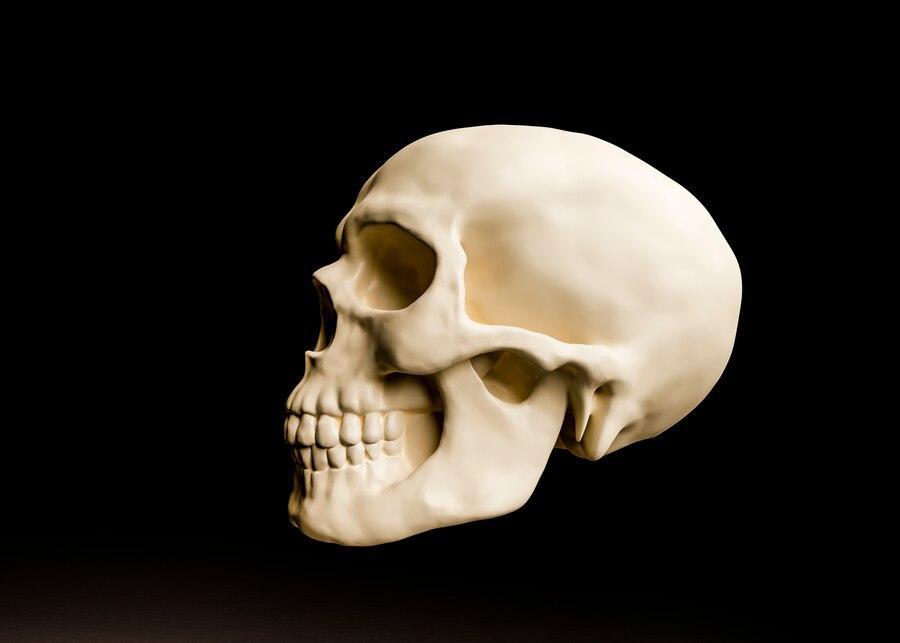Scientists Discover What Might Be a New Human Lineage
Archeologists in China found a human-like jawbone that they believe could change the way the world understands human evolution.
The unique formation of the jawbone has sparked questions and debate among anthropologists around the world, and their theories are wildly interesting.
The Now-Famous Jawbone
Published in the Journal of Human Evolution, the study of several human fossils, which dated to about 300,000 years ago, were outlined by the Chinese researchers who discovered them.

Source: Freepik
Within this collection lies the thought-provoking jawbone, called the HLD 6 mandible, that was found at the East China Hualongdong excavation.
What Makes the HLD 6 Mandible so Special?
While studying the mandible, anthropologists and academics from China noticed something strange.

Source: David Ramos/Getty Images
The study explains, “This combination of both archaic and modern human features identified in the HLD 6 mandible is unexpected, given its late Middle Pleistocene age and differs from approximately contemporaneous Homo members such as Xujiavao, Penghu, and Xiahe.”
Science for the Non-Scientists
For those who aren’t scientists, that essentially means that the jawbone has different features than it should have for how old it is.

Source: CM Dixon/Print Collector/Getty Images
The difference is that this jawbone lacks what academics call a “true chin,” and its unique formation has never been seen before.
Modern Features on an Ancient Bone
Essentially, this jawbone has many modern features, just like the mandible of a Homo erectus. In fact, Chinese scientists noted that the face shape is very similar to today’s humans.

Source: Getty Images
It has a triangular lower edge curve, like the Late Pleistocene hominins and humans today, but it doesn’t have a true chin as these species do. However, the jawbone is more than 300,000 years old.
These Details Are Quite Confusing for Anthropologists
Because the jawbone is similar in many ways to humans today but doesn’t have a true chin, the research team was originally quite confused by their finding.

Source: Freepik
But after extensive studies, they believe that the jawbone proves a “third lineage” that they never knew existed.
Understanding Modern Human Morphology
Now, to fully understand the idea of the “third lineage,” it’s first important to know what anthropologists around the world have long believed about human morphology.

Source: Freepik
For years, the understanding was that there were two lineages, Denisovan and Homo erectus and that all human morphology could fit into those two categories.
Human Morphology Was Believed to Have Started 100,000 Years Ago
And until now, most academics agreed that these lineages and human morphology only began about 100,000 years ago.

Source: Joe McNally/Getty Images
So, with the new information this mandible provides, there is not only a possible new lineage but also an entirely new timeframe.
“High Morphological Diversity in Hominin Evolution”
The mandible also proves that there was likely “high morphological diversity in hominin evolution.”

Source: Marc Charuel/Sygma/Getty Images
This essentially means that human evolution is much more complicated than experts once thought and that, actually, there could have been several variations of that evolution before humans became what they are today.
The Study Explains it All
In the study, they write, “Modern human morphologies could have been present as early as 300 ka, and earlier than the emergence of modern humans in East Asia.”

Source: Freepik
Because the skull was found in China, it means that while experts knew that morphology was occurring in East Asia about 100,000 years ago, this new lineage was evolving almost 200,000 years prior.
What Does the HDL 6 Mandible Mean for Science?
This finding is not only incredibly interesting from an archeological and anthropological perspective, but also for the world as a whole.

Source: The Print Collector/Getty Images
The new information it provides could completely change the way humans understand their ancestry and, maybe even more importantly, just how long we’ve actually been there.
Nothing Has Been Proven Quite Yet
Although these scientists are quite sure of their theory, nothing has been proven yet. More research on the mandible, as well as the other bones found at the site, will need to be conducted before science books are actually changed.

Source: Freepik
But for now, it’s very exciting to think that the long-believed notions of human evolution could be forever changed due to this one little jawbone.
